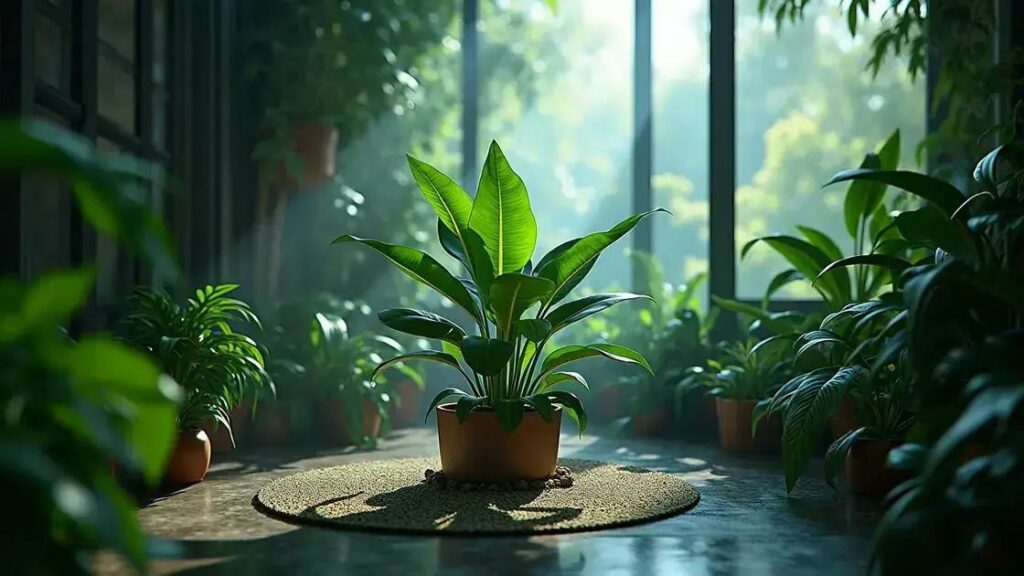How to properly care for a prayer plant? Caring for houseplants can often lead to confusion, but the rewarding aspects of tending to greenery are undeniable. With a rich, attractive appearance and the flexibility of indoor growth, a prayer plant’s allure is hard to resist. Learn practical steps that ensure your plant thrives!
Table of Contents
ToggleWatering needs for your prayer plant
Watering needs for your prayer plant are crucial to its overall health and vitality. Proper watering techniques ensure that your prayer plant flourishes in your indoor garden.
Your prayer plant appreciates a careful balance when it comes to moisture. Typically, the ideal approach involves keeping the soil consistently moist but not soggy. Here’s how to achieve that:
- Assess soil moisture: Check the top inch of the soil; if it feels dry, it’s time to water.
- Watering frequency: Generally, watering once a week is adequate, but this may vary based on humidity and temperature.
- Watering method: Water the plant thoroughly until you see excess water draining out of the pot’s bottom.
Choosing the right water also plays a role in maintaining your prayer plant’s health. Here are some tips:
- Use distilled or rainwater if possible, as tap water may contain chemicals that can harm the plant.
- Let cold water sit for a few hours to reach room temperature before watering.
Always keep an eye on your plant’s leaves as they can signal when something is off. Yellowing leaves may indicate overwatering, while curling leaves may signal underwatering.
For further tips on maintaining indoor plants, exploring indoor gardening techniques can provide valuable insights.
Optimal light conditions for prayer plants

Optimal light conditions for prayer plants are essential to their vibrant colors and healthy growth. Understanding these conditions can help you cultivate a thriving indoor environment for your beautiful foliage.
Prayer plants thrive in bright, indirect light. The right amount of light helps enhance their stunning patterns and colors, ensuring they stay lush and healthy. Here are key points to keep in mind:
- Avoid direct sunlight: Direct sunlight can scorch their leaves. Position your plant in a spot with filtered light.
- Spot for brightness: East-facing windows are ideal as they provide soft morning light.
- Artificial lighting: If natural light is limited, consider using fluorescent or LED grow lights to supplement.
It’s also helpful to rotate your plant every few weeks to ensure even light exposure on all sides. Remember, the ideal light condition isn’t just about the intensity—it’s the quality of light that counts.
Take cues from your plant’s appearance: if the leaves start to lose their vibrant colors or become limp, it may be time to reassess its light exposure.
For more insights into maintaining indoor plants, exploring indoor gardening techniques can provide valuable information.
Common mistakes in prayer plant care
Common mistakes in prayer plant care can hinder the health and beauty of these unique plants. Identifying and correcting these errors is vital for keeping your prayer plant vibrant and flourishing.
Many new plant owners unknowingly make mistakes that can leave their beloved plants struggling. Here are the top pitfalls to avoid:
- Overwatering: A common issue, too much water can lead to root rot. Always ensure the top inch of soil is dry before watering.
- Insufficient humidity: Prayer plants thrive in higher humidity levels. Consider using a humidifier or placing a pebble tray filled with water beneath the pot.
- Direct sunlight exposure: Placing your plant in harsh sunlight can scorch its leaves. Aim for bright, indirect light instead.
Some additional considerations include:
- Frequent fertilization: Over-fertilizing can cause leaf burn. Fertilize only during the growing season, typically spring and summer.
- Ignoring pests: Regularly check your plant for pests like spider mites or mealybugs, as they can damage the leaves.
- Neglecting pot size: If your plant becomes root-bound, it may struggle to grow. Repot your prayer plant every couple of years.
By staying aware of these common mistakes in prayer plant care, you can ensure your plant thrives beautifully. For more helpful tips, consider exploring indoor gardening techniques.
In conclusion
Successfully caring for your prayer plant is a rewarding experience that enriches your indoor space with beauty and life. By understanding its watering needs, optimal light conditions, and avoiding common mistakes, you can ensure your plant thrives. Remember to regularly check its environment and adjust as needed to keep your prayer plant healthy and vibrant.
For those looking to further enhance their indoor plant care knowledge, check out tips on enhancing your indoor garden.

